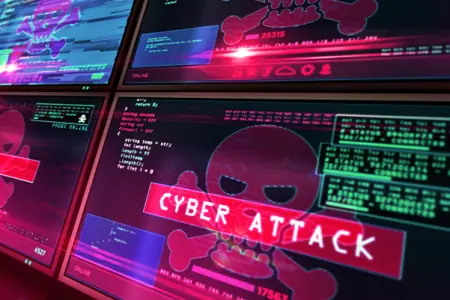
2020 Predictions: The Year of IT Resilience
A new year approaching means resolutions, goals, and optimistic predictions for success. Zerto’s prediction for IT leaders is that 2020 will be the Year of IT Resilience. Why? Because in 2020 more than ever, organizations need to:
- Decrease downtime—and the staggering costs associated with downtime
- Become cyber-resilient in the face of evolving and growing threats
- Rely on Continuous Data Protection over outdated snapshot-based alternatives that leave gaps in data coverage and operational efficiency
- Converge their disaster recovery and backup solutions
- Expand their use of cloud to gain flexibility and cost savings to meet current and future needs
In short—businesses will need to become IT Resilient. It’s no longer an option to stay ahead of the demands of digital business. Here are five predictions we’ve made based on developing trends that show 2020 will be the Year of IT Resilience:
Prediction 1: The costs and consequences of downtime will increase
Aging infrastructure, climate threats, cloud outages, and disparate data storage all leave businesses at risk of increased downtime, which cost them millions of dollars per year. Worse yet, the cost of downtime is only expected to increase in 2020 because:
- More revenue will be generated from digital services and use of data
- Internet of Things (IoT) and edge data monetization will continue to grow
- The pace of enterprise application delivery will continue to accelerate.
Given the breakneck speed at which companies are deepening their reliance on operation-critical data, downtime is quickly becoming an unacceptable—and increasingly unnecessary—loss.
Prediction 2: Cyberattacks will drive a change from cybersecurity to cyber-resilience
The cost of a cyberattack, particularly ransomware, is exorbitant—and the threat of ransomware attacks is rapidly growing. Ransomware attacks on businesses cause loss of productivity, reputation damage, and service disruption, and the average cost of recovery is at $1.4 million and rising.
2020 is expected to see an increase in the volume and severity of attacks because cyber criminals adapt, innovate, and specialize their ransomware attacks to their victims. Therefore, the way you address cybersecurity must also evolve to go beyond securing your network parameters to focus on protecting the data itself. By spreading it across global and regional systems, devices, and clouds you can ensure recoverability within seconds of an attack. In other words, protecting your data requires cyber-resilience.
Prediction 3: Continuous Data Protection will become the standard for recovery.
Traditional data protection strategies no longer meet recovery needs, especially with different disaster scenarios on the rise. As these continue to evolve, they do more damage, access more data, and lead to more downtime. Despite advances in tactics and scenarios that cause disruption, industries still rely on the standard, dated recovery process—a method that simply can no longer keep up.
Traditional snapshot-based backups use images of data taken at most every 24 hours, leaving huge gaps in critical data. Simply taking snapshots more frequently isn’t possible because of the overwhelming impact it would have on network performance. What’s more, most backup infrastructure is sized for backup workloads—not for complete disaster recovery scenarios. After a ransomware attack, for example, a company relying on traditional backup solutions must spend time and resources to:
- Recover the data to the nearest image available (up to 24 hours away)
- Repair the recovered data so that it is in a usable state
- Determine and re-enter any lost data (if possible)
With Continuous Data Protection, however, data is updated in near real-time to always be accurate within seconds. This means less time, fewer resources, and less lost data in the event of an outage.
Prediction 4: Organizations will transition from point solutions to a converged platform
Disaster recovery, backup, and cloud storage are historically individual point solutions. Keeping these vital and sometimes overlapping solutions separate, however, can lead to serious inefficiencies, not the least to mention is cost. In addition, pieces can quickly become outdated, a lack of centralization makes moving and updating resource-intensive, visibility becomes difficult to maintain across solutions, and lack of control working with multiple providers.
Zerto’s converged IT Resilience PlatformTM joins these pieces into a single, all-in-one solution, which allows for fluid data management, centralized control and visibility, and unparalleled accessibility.
Prediction 5: Most enterprise workloads will reside in the cloud
Cloud-first strategies are now the norm for most organizations world-wide. The key to thriving in this modern, cloud-first environment is the ability to protect and move your workloads to, from, and between clouds based on your business’s changing needs. Keeping your cloud storage agile is easy with Zerto’s orchestration and automation tools: whether you have one cloud or many multi- or hybrid-clouds, everything can be managed and moved using a single, streamlined interface.
When making your New Year’s resolutions this year, commit to keeping your business equipped to face 2020—including all its possible challenges and opportunities. Join us for a webinar where we’ll discuss these predictions and how you can mitigate challenges with prescriptive steps you can take this year.
With Zerto, 2020 will be the Year of IT Resilience.


